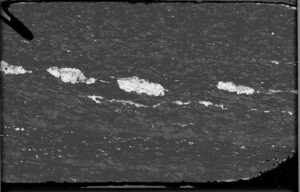Geology and environmental studies major Emily Carlson (’20) has been working with faculty member Rory McFadden (Geology) to sleuth the origins of a needle in a geologic haystack. McFadden, who conducts research in the Pioneer Mountains of Idaho, returned from a field season with a curious sample – it contains layers just a few millimeters thick of magnetite and ilmenite minerals, which are much denser than the quartz-rich rocks that enclose them. The two are working to determine the age of the structures, called “boudins,” using geochronology techniques to place the mystery rock into a broader geologic context of the metamorphic zone the sample hails from.
“After analysis, we found that some of the minerals in these layers are around 1.7 billion years old. That’s old,” says Carlson. This age indicates that these minerals have been around a while and contain a history of their formation and any intense metamorphic or melting events they might have experienced. “The next step is to sort through the chemical signatures of these minerals to see what their source might be.”

Carlson says she is grateful for the research experience that is required of all Gustavus geology majors. “Is it a challenge? Yes. Is it always fun? No. But this process is helping me grow in my public speaking, writing, and critical thinking skills. Even though my next steps beyond Gustavus don’t likely include ‘Research with a capital R,’ this process is an invaluable and unique part of my experience as an undergrad.”